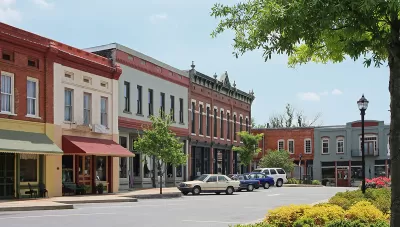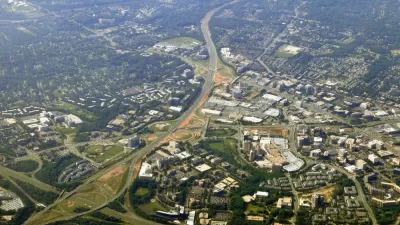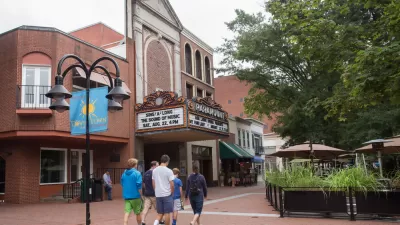The Terraces, a mixed-use project in Charlottesville, Virginia, adopts a design that reflects its historic downtown surroundings. Oliver Kuttner, the developer, says that "breaking up" large buildings can make them more palatable on street level.

Too often, over-sized modern buildings swamp classic Main Street and downtown scale. Charlottesville developer Oliver Kuttner sees a better way. On the Terraces, Kuttner's recent project, Scott Beyer writes, "Kuttner could have knocked down the building and constructed a larger one with modern materials. But instead he preserved it, restoring certain parts and replacing others, while strengthening the foundation to add stories above [...] Thus, what was once a singular brick building now appears like multiple smaller ones, actually fitting better than before into the existing urban context."
Public and private obstacles can stand in the way of these projects. From the article: "Investors today are less willing to finance projects that are unique. Such projects may have bigger long-term returns, but present more upfront risk. But the main reason is regulatory. Parking requirements prevent many downtown projects from being financially-viable. Modern building and fire codes require everything to be wider and more open, producing out-of-scale design."
Of course, the trick is to simulate Main Street well enough to avoid a Disneyland-esque tackiness in the final product.
FULL STORY: America’s Progressive Developers–Oliver Kuttner

Planetizen Federal Action Tracker
A weekly monitor of how Trump’s orders and actions are impacting planners and planning in America.

Restaurant Patios Were a Pandemic Win — Why Were They so Hard to Keep?
Social distancing requirements and changes in travel patterns prompted cities to pilot new uses for street and sidewalk space. Then it got complicated.

Map: Where Senate Republicans Want to Sell Your Public Lands
For public land advocates, the Senate Republicans’ proposal to sell millions of acres of public land in the West is “the biggest fight of their careers.”

Orange County, Florida Adopts Largest US “Sprawl Repair” Code
The ‘Orange Code’ seeks to rectify decades of sprawl-inducing, car-oriented development.

Maui's Vacation Rental Debate Turns Ugly
Verbal attacks, misinformation campaigns and fistfights plague a high-stakes debate to convert thousands of vacation rentals into long-term housing.

San Francisco Suspends Traffic Calming Amidst Record Deaths
Citing “a challenging fiscal landscape,” the city will cease the program on the heels of 42 traffic deaths, including 24 pedestrians.
Urban Design for Planners 1: Software Tools
This six-course series explores essential urban design concepts using open source software and equips planners with the tools they need to participate fully in the urban design process.
Planning for Universal Design
Learn the tools for implementing Universal Design in planning regulations.
Heyer Gruel & Associates PA
JM Goldson LLC
Custer County Colorado
City of Camden Redevelopment Agency
City of Astoria
Transportation Research & Education Center (TREC) at Portland State University
Camden Redevelopment Agency
City of Claremont
Municipality of Princeton (NJ)





























